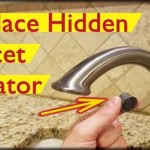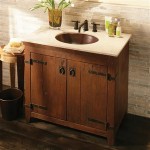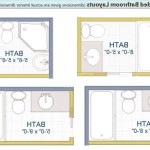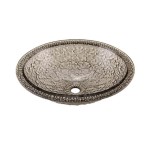Master Bathroom Vanities with Double Sinks: A Comprehensive Guide
The master bathroom serves as a sanctuary, a space for relaxation and rejuvenation. A key component in achieving this is the vanity, and for many, a double sink vanity represents the pinnacle of luxury and practicality. This article provides a detailed overview of master bathroom vanities with double sinks, exploring their benefits, considerations, types, installation, and maintenance.
Enhanced Functionality and Convenience
One of the primary advantages of a double sink vanity is the enhanced functionality it offers, particularly for couples or individuals sharing the master bathroom. A double sink vanity eliminates the need to wait for access to the sink, streamlining morning and evening routines. This is especially beneficial in busy households where schedules often overlap. Each person has their designated space for personal hygiene tasks such as brushing teeth, washing faces, and applying makeup, reducing congestion and promoting a more harmonious bathroom experience.
Furthermore, a double sink vanity often includes ample counter space and storage. The increased surface area allows for the convenient placement of toiletries, grooming products, and decorative items, keeping the bathroom organized and clutter-free. Many double sink vanities incorporate multiple drawers, cabinets, and shelves, providing separate storage solutions for each user. This ensures that personal items are easily accessible and prevents conflicts over shared space.
In practical terms, a double sink vanity can save valuable time. Instead of alternating turns at a single sink, two individuals can perform their morning routines simultaneously, leading to a more efficient use of time, especially during peak hours. This time-saving aspect can contribute to a less stressful start to the day and a more relaxed evening routine.
Design Considerations and Styles
Master bathroom vanities with double sinks are available in a wide range of styles, materials, and finishes, making it possible to find a vanity that complements any design aesthetic. From traditional to modern, minimalist to ornate, there are options to suit every taste and preference. Selecting the right style requires careful consideration of the overall bathroom design and the desired ambiance.
Traditional vanities often feature ornate details, raised panel doors, and decorative hardware. They are typically crafted from solid wood and finished with rich stains or paints. These vanities evoke a sense of timeless elegance and sophistication, often incorporating elements of classic design. Countertop options for traditional vanities often include granite or marble, further enhancing their luxurious appeal.
Modern vanities, on the other hand, tend to have clean lines, minimalist designs, and a focus on functionality. They often feature sleek surfaces, handle-less doors, and contemporary materials such as engineered stone or glass. Modern vanities are available in a variety of colors and finishes, from glossy white to matte black, allowing for a seamless integration into modern bathroom designs. Floating vanities, which are mounted to the wall, are a popular choice for modern bathrooms, creating a sense of spaciousness and visual appeal.
Transitional vanities bridge the gap between traditional and modern styles, combining elements of both. These vanities often feature clean lines with subtle embellishments, making them versatile and adaptable to a variety of bathroom designs. They may incorporate shaker-style doors, simple hardware, and neutral colors. Transitional vanities offer a balanced aesthetic that is both timeless and contemporary.
The choice of countertop material is another crucial design consideration. Granite, marble, quartz, and solid surface materials are commonly used for bathroom vanity countertops. Each material offers unique characteristics in terms of durability, aesthetics, and maintenance requirements. Granite and marble provide a natural stone look, while quartz is known for its durability and resistance to stains. Solid surface materials offer a seamless and non-porous surface that is easy to clean.
Installation and Plumbing Requirements
Installing a master bathroom vanity with a double sink involves careful planning and execution to ensure proper functionality and aesthetics. While some homeowners may opt for professional installation, others may choose to tackle the project themselves. Regardless of the approach, it is essential to understand the plumbing requirements and installation procedures.
Before beginning the installation process, it is crucial to measure the available space and ensure that the vanity will fit comfortably within the bathroom. Consider the placement of existing plumbing lines and determine if any modifications are necessary. It is also important to check local building codes and regulations to ensure compliance. Access to shut-off valves for both hot and cold water lines is essential for connecting the plumbing to the double sink vanity.
The plumbing for a double sink vanity requires two sets of water supply lines and drains. This may necessitate modifications to existing plumbing, depending on the layout of the bathroom. It is important to ensure that the drain lines are properly sloped to allow for efficient drainage and prevent clogs. Venting is also crucial to maintain proper drainage and prevent sewer gases from entering the bathroom. If the existing plumbing is not adequate, it may be necessary to hire a licensed plumber to make the necessary modifications.
Installing the vanity itself involves securing it to the wall or floor, depending on the type of vanity. Wall-mounted vanities require sturdy wall anchors to support the weight of the vanity and its contents. Floor-mounted vanities should be properly leveled and secured to the floor to prevent movement. Once the vanity is in place, the sinks can be installed, followed by the faucets and drain assemblies. It is important to follow the manufacturer's instructions carefully to ensure proper installation and prevent leaks.
After the plumbing connections are made, it is essential to test for leaks thoroughly. Run both hot and cold water to check for any drips or leaks around the faucets, drains, and supply lines. If leaks are detected, tighten the connections or replace any faulty components. It is also important to check the drain lines for any clogs or obstructions. Once the installation is complete and all leaks have been addressed, the vanity can be caulked around the edges to seal it against the wall or floor, preventing water damage.
Storage and Organization Solutions
A master bathroom vanity with a double sink provides ample opportunities for incorporating storage and organization solutions. The increased space allows for the integration of various storage features, such as drawers, cabinets, shelves, and pull-out organizers. Effective storage solutions can help to keep the bathroom clutter-free and ensure that essential items are readily accessible.
Drawers are ideal for storing smaller items, such as toiletries, makeup, and grooming tools. Dividers and organizers can be used within the drawers to separate items and prevent them from becoming disorganized. Soft-close drawer slides are a desirable feature, preventing the drawers from slamming shut and reducing wear and tear on the vanity.
Cabinets offer larger storage space for items such as towels, cleaning supplies, and extra toiletries. Adjustable shelves allow for customization of the storage space to accommodate items of different sizes. Door-mounted organizers can be used to store hair dryers, curling irons, and other styling tools, keeping them within easy reach.
Open shelves provide a visually appealing storage solution for displaying decorative items, such as plants, candles, and decorative towels. Baskets and bins can be used on the shelves to store smaller items and keep them contained. Open shelves can also be used to store frequently used items, such as hand towels and soaps, making them easily accessible.
Pull-out organizers, such as vanity organizers and hair styling appliance holders, can maximize the use of space within the vanity. These organizers provide dedicated storage for specific items, keeping them neatly organized and preventing clutter. They can also be easily accessed, making them a convenient storage solution.
In addition to the storage solutions within the vanity, consider incorporating additional storage options in the bathroom, such as wall-mounted cabinets, shelves, and towel racks. These additional storage solutions can help to keep the bathroom organized and maximize the available space.
Maintenance and Cleaning
Proper maintenance and cleaning are essential for preserving the appearance and functionality of a master bathroom vanity with a double sink. Regular cleaning can prevent the buildup of soap scum, mildew, and water stains, ensuring that the vanity remains in good condition for years to come.
The countertop should be cleaned regularly with a mild soap and water solution. Avoid using abrasive cleaners or scouring pads, as these can scratch the surface. Granite and marble countertops should be sealed periodically to protect them from stains. Quartz and solid surface countertops are non-porous and do not require sealing.
The sinks should be cleaned regularly with a non-abrasive cleaner to prevent the buildup of soap scum and water stains. Rinse the sinks thoroughly after cleaning and dry them with a soft cloth. Avoid using harsh chemicals or bleach, as these can damage the sink finish.
The faucet fixtures should be cleaned regularly with a mild soap and water solution. Use a soft cloth to dry the fixtures and prevent water spots. Avoid using abrasive cleaners or scouring pads, as these can scratch the finish. If the faucets are chrome or polished nickel, consider using a specialty cleaner to maintain their shine.
The cabinets and drawers should be cleaned periodically with a damp cloth. Avoid using excessive water, as this can damage the wood. Wood cleaner can be used to polish the cabinets and drawers and maintain their finish. Check the hinges and drawer slides periodically and lubricate them if necessary.
To prevent water damage, ensure that the caulking around the vanity is intact. If the caulking is cracked or damaged, remove it and replace it with fresh caulking. This will prevent water from seeping behind the vanity and causing mold or mildew growth.
Regular maintenance and cleaning will help to keep the master bathroom vanity with a double sink looking its best and ensure its longevity. By following these simple tips, homeowners can enjoy their vanity for many years to come.

Pin On Bathroom Renovation

Pin On Home Ideas

Gorgeous Double Vanity Design Ideas Bathrooms With Vanities

Dual Or Single Bowl Vanity Is One Two Master Bathroom Sinks Best Degnan Design Build Remodel

9 Ideas For The Space Between Double Sinks In Bathroom

Master Bathroom Vanity Design Ideas

Find Out If Your Home Needs A Double Sink Vanity

40 Bathroom Vanities You Ll Love For Every Style

Master Bathroom Vanity A Full Review Sarah Jane Christy

8 Beautiful Double Bathroom Vanity Ideas Oppein
Related Posts







